CAA News Today
Meet the 2024 CAA-Getty International Program Participants
posted by CAA — November 29, 2023
CAA is pleased to announce this year’s participants in the CAA-Getty International Program. Now in its thirteenth year, this international program, supported by the Getty Foundation, welcomes twelve new participants and four alumni to attend the 2024 Annual Conference in Chicago, IL. The goal of the CAA-Getty International Program is to increase international participation in CAA’s activities and the field of visual arts in academia, thereby expanding international networks and the exchange of ideas both during and after the conference. We look forward to welcoming this year’s participants!
At a preconference colloquium, the new participants will discuss key issues in the international study of art history together with CAA-Getty alumni and US hosts. The program will delve into topics such as postcolonial and Eurocentric legacies, decolonization of museums, scholarship and pedagogy, interdisciplinary and transnational methodologies, and the intersection of politics and art history. Learn more about the first ten years of the program in our online publication.
Program participants—art historians, curators, and artists—hail from multiple countries, expanding CAA’s international membership and contributing to an increasingly diverse community of scholars and ideas. Selected by a jury of CAA members from a highly competitive group of applicants, each participant will receive funding for travel, hotel accommodation, conference registration, CAA membership, and a per diem.
Alumni invited back to the 2024 conference will present at the Art, Authenticity, Migration, and Global Climate Change session while also connecting our new participants to our burgeoning group of nearly 160 CAA-Getty International Program alumni.
2024 PARTICIPANTS IN THE CAA-GETTY INTERNATIONAL PROGRAM

Mariela Cantú is a researcher, audiovisual preservationist, artist, and curator. She is a PhD candidate in Art History at the University of San Martín (CIAP-UNSAM CONICET) and holds a master’s degree in Preservation and Presentation of the Moving Image (University of Amsterdam). She is a member of RAPA—Argentinian Network of Audiovisual Preservationists, and the creator of Arca VIDEO, a collaborative archive of Argentinian video art. She has undergone specific training on video preservation at Associação Cultural Videobrasil (Brazil), La Camera Ottica (Italy), Media Burn Archive and Video Data Bank (USA), and Cinemateca Boliviana (Bolivia), while also attending the Film Preservation and Restoration School Latin America (CINAIN, Cineteca de Bologna, L’Immagine Ritrovatta and FIAF). She has been a professor at Universidad de Buenos Aires, Universidad del Cine, Universidad Nacional del Arte, and Universidad Nacional de La Plata, among others.
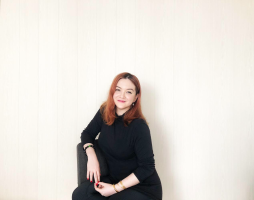
Kathleen Ditzig is a curator at National Gallery Singapore. She received a PhD from Nanyang Technological University in 2023 with a dissertation titled “Exhibiting Southeast Asia in the Cultural Cold War: Geopolitics of Regional Art Exhibitions (1940s–1980s).” She obtained an MA from the Center for Curatorial Studies, Bard College, in 2015. Inspired by her experience in cultural policy, Ditzig studies modern and contemporary Southeast Asian art in relation to global histories of capitalism, technology, and international relations. As a curator and researcher, she is invested in advancing and interrogating art as an exceptional site and system of speaking to power. She won an IMPART Curatorial Award in 2021. Her writing has been published by Southeast of Now, Journal of Social Issues in Southeast Asia, Afterall, post: notes on art in a global context, Art Agenda, and Artforum, among others.
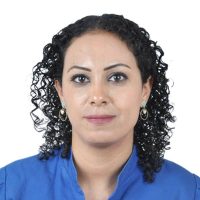
Marzouka Hanna Ibrahim Gaied has a bachelor’s degree in Egyptology from El Minya University, Egypt. Their research has focused primarily on the art of Middle Kingdom (about 2000 BCE) in the Beni Hasan al-Shuruq area of Middle Egypt, and they have wide-ranging experience working on many archaeological sites across Egypt. In their current position as Inspector of Antiquities at the Central Department for Seized Antiquities, they are on the front lines of addressing the trade in looted artifacts, which drains Egypt of its cultural resources. Their experiences have provided them with a deep knowledge of excavation techniques, collection management, and a passion for local community engagement.

Paweł Ignaczak graduated in art history at the Adam Mickiewicz University in Poznań, where he earned a PhD for his thesis on etchings of Jean Pierre Norblin de la Gourdaine (1745–1830) in 2013. Between 2003–15 he worked in the Print Room of the National Museum in Poznań and in the print collection of the Polish Library in Paris. From 2015–22 he worked at the Museum of Warsaw. Since 2015, he has been lecturing at the Academy of Fine Arts in Warsaw, and since 2020 he has been vice-dean at the Faculty of Artistic Research and Curatorial Studies. Currently, he’s been conducting research on amateur artistic work in Poland in the second half of the eighteenth and early nineteenth centuries.

Eyitayo Tolulope Ijisakin is an associate professor in the Department of Fine and Applied Arts, Obafemi Awolowo University, Ile-Ife, Nigeria. His doctoral research focuses on printmaking and the developmental history and contributions of printmaking to contemporary Nigerian art. He has written for Critical Arts and African Arts. Dr Ijisakin is a Fellow of the American Council of Learned Society in the African Humanities Program. He was a Postdoctoral Fellow with the Arts of Africa and the Global South, Rhodes University, South Africa (2017–18). He also received the Carnegie Corporation of New York Fellowship for the 63rd Annual Meeting of the African Studies Association (2020). He has served as a reviewer for several international journals. He is listed among the artists whose works engage social change by the Denver Art Museum, in 2022. He is a member of the Society of Nigerian Artists and the Nigerian Field Society.
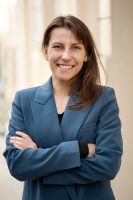
Agnieszka Patala is an assistant professor in the Institute of Art History, University of Wroclaw. The area of her academic focus is medieval art in Europe, with particular reference to panel painting and sculpture—the (multisensorial) relations of artworks with the viewer and space, their use in devotional practices, extra-religious realities of their functioning, including afterlives in the nineteenth totwenty-first centuries. In 2015 she wrote her dissertation on the impact of Nuremberg art and artists on late Gothic panel painting in Silesia. It was published in 2018 and served as a foundation for exhibition, Migrations: Late Gothic Art in Silesia (National Museum in Wroclaw). Currently, she is at work on her postdoctoral project determining the origins, functions, and agency of early altarpieces in Central Europe. She is also a co-investigator in the project, Residua of Premodern Relations with Art in Selected Contemporary Convents in Poland.
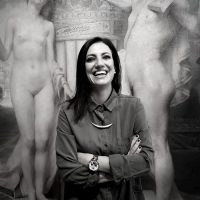
Elena Stylianou researches, writes, and curates at the intersection of the history and theory of photography, modern and contemporary art, critical studies, and museum and curatorial practices. She is currently associate professor at European University Cyprus and president of the International Association of Photography and Theory (IAPT). Her scholarship has been published in peer-reviewed journals and edited volumes, and she is co-editor of Museums and Photography: The Display of Death (Routledge, 2018), Ar(t)chaeology: Intersections of Photography and Archaeology (IAPT Press, 2019), and Contemporary Art in Cyprus: Politics, Identity and Culture Across Borders (Bloomsbury, Spring 2021). She is currently working on a special issue on processes of decolonization and the photographic archive. Elena earned her doctoral degree from Columbia University Teachers College, is a recipient of numerous awards and grants, including a Fulbright and an ArtTable fellowship, and she held a postdoctoral position at UCL, London. She has curated international art exhibitions in Cyprus, and is the lead researcher of several funded projects dealing with arts and heritage.
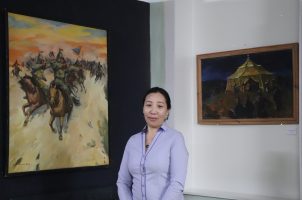
Suvdaa Sampil is a curator at the History and Local Museum of Tuv province, Mongolia, and has been working as a museum curator since 2011. They have written academic articles on cultural heritage research, art history, and interethnic relations that have been published in national and international journals. Moreover, they wrote the books Cultural Heritage of the Central Region and The Settlement of Ethnic Groups in the Tuv Province: Some Cultures and Traditions. After receiving a master’s from the University of Mongolia in 2007, their research concentrated mainly on Mongolian and local cultural heritage and art history. Sampil is in charge of the cultural heritage and collections at the museum and curates permanent temporary exhibitions. In 2016, they were a member of the International Committee for Museums and Collections of Modern Art (CIMAM), an Affiliated Organization of ICOM, and became a member of the International Committee of Museums (ICOM) in 2018.
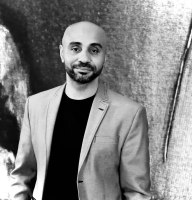
Igor Simões has a PhD in Visual Arts—History, Theory, and Criticism of Art at the Programa de Pós-Graduação em Artes Visuais da Universidade Federal do Rio Grande do Sul (PPGAV-UFRGS) and is the adjunct professor of History, Theory, and Criticism of Art and Methodology and Practice of Art Teaching (UERGS). He was assistant curator of the 12th Mercosur Biennial, member of the curatorial committee of the National Association of Fine Arts Researchers (ANPAP). He works with the links between exhibitions, film editing, art history, and racialization in Brazilian art and the visibility of Black subjects in the visual arts and is the author of the thesis “Film Editing and Exhibition: Black Voices in the White Cube of Brazilian Art.” He is also a member of the curatorial committee of the Museum of Contemporary Art at the University of São Paulo/USP. Curator of the exhibition “Presença Negra no Museu de Arte do Rio Grande do Sul” (2022). He is a member of the curatorial boards of the exhibitions Social Fabric and Enpowerment and a member of the board of AWARE—Archives of Women Artists, Research and Exhibitions and Fractured Times. In 2023 he was general curator of Dos Brasis: Arte e pensamento negro, the most comprehensive exhibition of Black Brazilian artists (Brazil- São Paulo). That same year he was guest curator at the Inhotim Institute for the 2023 season, curating the exhibitions Mestre Didi: The Initiates in Mystery Don’t Die and Doing the Modern, Building the Contemporary: Rubem Valentim and the Right to Form. In 2024, he will co-curate Rosana Paulino: Atlântica e Amefricana at Museo de Arte Latinoamericano de Buenos Aires (MALBA).
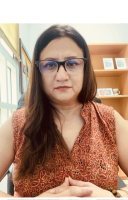
Trained as a studio artist with a major in sculpture, Kanwal Syed earned her PhD in art history from Concordia University as the 2023 Graduate Valedictorian. During her candidacy, she earned the prestigious FQRSC doctoral grant and numerous internal grants, published three journal articles, co-chaired two panels at the annual College Art Association conference, and presented papers at academic conferences in Vancouver, Brighton, Rome, and Chicago. Her dissertation titled “ھم گنہاگار عورتیں (We Sinful Women): Urban Feminist Visuality in Contemporary Art and Feminist Movements in Pakistan After 9/11,” garnered an Honorable Mention in the UC Berkeley South Asia Art & Architecture Dissertation Prize 2023 and has been nominated for NAGS Dissertation Award 2023–24. Before joining American University in Dubai as an Assistant Professor of Art history, she worked as an adjunct faculty at the University of British Columbia and as a part-time faculty at Concordia University. Her research interests encompass non-Western art, decoloniality and cultural feminist visuality in contemporary art.
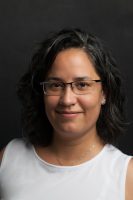
Carolina Vanegas Carrasco researches the processes of creation and reception of nineteenth-century monuments in Latin America. She is the current director of Centro de Estudios Espigas at the Universidad Nacional de San Martín, Argentina, and researcher of the Centro de Investigaciones en Arte y Patrimonio (CONICET-UNSAM). Vanegas is General Coordinator of the Group of Public Art Studies in Latin America based on the Universidad de Buenos Aires. She is the author of Disputas monumentales: escultura y política en el Centenario de la Independencia en Colombia (Bogotá, 1910) (2019, Instituto Distrital de Patrimonio Cultural of Bogotá).
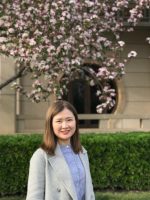
Fanying Zhang, an Assistant Professor in the Department of Arts Administration, Education, and Policy at the China Academy of Art, earned her Ph.D. in Art History in 2021. Her research focuses on unraveling how the Western world shaped its perceptions of Chinese art in the 20th century. She places particular emphasis on analyzing exhibitions, conferences, publications, and the contributions of scholars, artists, and curators to the global dissemination of Chinese art. Zhang’s academic career commenced with a graduate program centered on Osvald Sirén who had already been an accomplished scholar in the study of Trecento painting before getting involved in the study of Chinese art. After that, she expanded her interests in transcultural art history, particularly the role of Chinese art in constructing global art history. She has incorporated this interest into her teaching and is engaged in international collaborations. She is also involved in a project on Professor James Cahill’s archive initiated by the China Academy of Art, further enriching her experience in the field.
PARTICIPATING ALUMNI
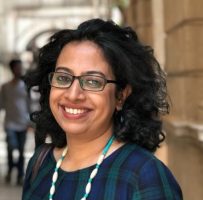
Amrita Gupta is an art historian, writer, administrator, and editor involved in arts education and cultural management. With over two decades in the nonprofit cultural sector in India, she has contributed through art historical research, teaching, published writing, arts programming, and institution building. In 2002, she joined the Mohile Parikh Center (MPC), Mumbai, and became its Program Director in 2005, a responsibility she served till early 2023. In this capacity, she facilitated critical thinking by curating a wide range of innovative art education programs, initiating public art projects, and co-creating short art videos for diverse audiences, and remains associated with the MPC in an honorary capacity. She is Founding Member and Co-director at the Council for Arts and Social Practice (CASP), established in 2013 as a transdisciplinary platform to facilitate critical dialogues on cultural sustainability. Her practice at CASP focuses on the interplay of social history, fieldwork, community-based art, and collective experience. She serves as a jury member for the Arthur Kingsley Porter Prize for Art Bulletin articles and the SAIL Mentorship Program (Edition III) at Sunaparanta Goa Center for the Arts. In 2019, she co-founded and edits the e-journal, Partition Studies Quarterly (PSQ), which focuses on partition narratives of Northeast India, and other less-remembered partition stories in the subcontinent. Her ongoing and independent research focuses on the art practices of Northeast India, and an essay on this topic has been published in the edited book 20th Century Indian Art (Thames & Hudson and Art Alive, 2022). Her art writings for anthologies, journals, exhibition catalogs, and magazines have been published widely in leading print and digital platforms; she has edited art books for children and continues to write on Indian modern and contemporary art.
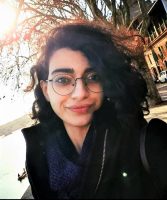
Delaram Hosseinioun received her first MA in literary criticism from the University of Exeter and her second MA in cultural studies from KU Leuven University. In her PhD project at Utrecht University, titled “Unveiling the Other: The Metamorphosis of Voices of Iranian Female Artists from the Mid-Twentieth Century to the Present Day,” Delaram draws from gender theories in poststructuralist psychoanalysis, such as in the works of Butler and Cixous, along with theories regarding self and forms of othering in continental philosophy, namely works of Bakhtin and Derrida. Her goal is to trace the trajectories and endeavors of Iranian female artists in reclaiming their identities. Working along with the artists Delaram explores the artworks as a pictorial form of dialogue and artists’ attempts in surpassing sociocultural restraints. Delaram’s focus rests on the revelation and universality of women’s voices in creative platforms, art journalism and interviewing artists beyond borders.
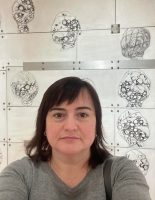
Mariana Levytska is an associate professor in the Department of Graphic Design and Artbooks of the Ukraine Academy of Printing. She works as a part-time senior research associate in the Department of Art Studies of the Ethnology Institute at the national Academy of Ukraine in Lviv. She received her PhD in the history of art from the Lviv National Academy of Arts in 2023. She specializes in Ukrainian art of the long nineteenth century through social art history optics. In 2022 she began a research project focused on artists’ response to the warfare in Ukraine, after the full-scale Russian invasion.
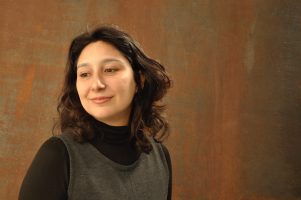
Ana Mannarino is an art historian and professor of Art History at School of Fine Arts at Federal University of Rio de Janeiro (EBA-UFRJ) and at Visual Arts Postgraduate Program at Federal University of Rio de Janeiro (PPGAV-UFRJ). She received her PhD in Art History/Visual Arts at PPGAV-UFRJ and participated in a yearlong collaborative study program at Université Sorbonne Nouvelle-Paris 3. Her doctoral thesis, “Word in Brazilian Art: Mira Schendel and Waltercio Caldas,” focuses on the relationship between text and image in Brazilian contemporary art, especially in the work of these two artists. Her research also considers modern art and historiography of art in Brazil, the connections between art and poetry, Concrete art, and the production of artists’ books.
This program is made possible with support from Getty through its Connecting Art Histories initiative.

Global Conversations: Materiality and Mediation
posted by CAA — September 27, 2022
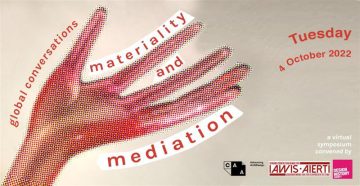
We are excited to introduce the presenters for the virtual symposium, Global Conversations: Materiality and Mediation, on October 4, 2022 from 11 am to 1 pm Eastern time. The event is organized by the College Art Association (CAA) and two of its international affiliated societies, the Design History Society and the International Association of Word and Image Studies. To register for the event, visit this page.
This global collaborative project brings together three intersecting constituencies—art and design, design history, word, and image studies—to examine how materiality and mediation intersect.
Four participating scholars will present on the following topics, followed by Q&A and discussion. The event will be recorded and shared online following the event.
This no-cost event is open to the public. Please consider donating to support no-cost programming and providing access to new and emerging scholarship.
CAA’s membership program connects you to the largest community of individuals and organizations working together and advocating to advance research, practice, and the impact of the visual arts. Visit our website for more information and to join our organization.
Questions? Email info@collegeart.org.
Interested in becoming an affiliate?
Arts organizations interested in joining CAA as an affiliated society can do so by visiting our website.
To join the Design History Society, please visit this page.
To join the International Association of Word and Image Studies, please visit this page.
Global Conversations: Materiality and Mediation
Presentations and Panelists
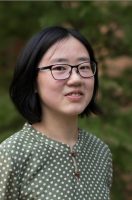
“Tavolino di gioie”: The Mediation of Material Techniques in Late Cinquecento Hardstone Inlaid Tables – Wenyi Qian, Ph.D. Candidate in Art History, University of Toronto, Toronto
Wenyi Qian is a Ph.D. candidate in early modern Italian art, with a focus on the relationship between artistic practice and knowledge culture of the period. Her dissertation examines the production of hardstone inlaid tables in late Cinquecento and Seicento Italy at the nexus of early modern craft knowledge, natural sciences, and courtly life and consumption. It aims to track technical crossovers between disparate artistic media and scales in the making of this genre of domestic furniture. She holds a BA in History of Art with Material Studies and an MA in History of Art from University College London. Prior to her doctoral research, she interned at the Museum of Fine Arts, Houston, and worked as a convenor of academic programs at OCAT Institute, Beijing. This latter experience led to her interest in the historical formation of the discipline in Europe, as well as transnational intellectual exchange around the ideas of the arts and humanities across Europe, America, and East Asia over the last century. In addition to academic research, her translation of Victor I. Stoichita’s L’Instauration du tableau: métapeinture à l’aube des temps modernes is forthcoming by the end of 2022.
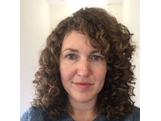
Mediating the Meaning of Textiles through Exhibition Displays in Israel, 1950s-1970s – Noga Bernstein, Marie-Sklodowska Curie Visiting Researcher, Hebrew University of Jerusalem
Noga Bernstein is an art and design historian, specializing in modern craft in the United States and Israel, with a particular focus on textiles. She is currently a visiting researcher at the Hebrew University in Jerusalem. Her current research project, funded by a Marie Sklodowska-Curie Fellowship, investigates the history of textile art and design in Israel between the 1940s-1990s. She also works on a book manuscript on the US-textile design Ruth Reeves. Dr. Bernstein is a recipient of grants from the Smithsonian Institution, the American Council of American Art and the Center for Craft. She completed her PhD in art history at Stony Brook University in 2019.
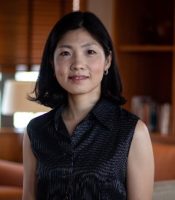

Made in Japan: Development of the Poster Medium in Japanese Commercial Art and Design – Nozomi Naoi, Associate Professor of Humanities, Yale-NUS College, Singapore
Erin Schoneveld, Associate Professor of East Asian Languages and Cultures and Director of Visual Studies, Haverford College, Haverford, Pennsylvania
Nozomi Naoi is Associate Professor of Humanities at Yale-NUS College with joint appointment at the Department of Japanese Studies, Faculty of Arts and Social Sciences at the National University of Singapore. She specializes in modern Japanese art and the media environment and is the author of Yumeji Modern: Designing the Everyday in Twentieth-Century Japan (University of Washington Press, 2020; awarded the Honorable Mention for the John Whitney Hall Prize 2022). Her current project focuses on Japanese poster design and the role of department stores, designers, and global modernism during the early twentieth century and she is currently preparing her second book manuscript titled: Modern Design and the Japanese Department Store: Visualizing the New Lifestyle. She is also co-curating an exhibition on postwar Japanese posters at the Poster House Museum in New York, opening in March 2023.
Erin Schoneveld is Associate Professor of East Asian Languages and Cultures; and Associate Professor and Director of Visual Studies at Haverford College. Schoneveld’s scholarship and teaching engages with modern and contemporary Japanese art, cinema, and visual culture. Her book Shirakaba and Japanese Modernism: Art Magazines, Artistic Collectives, and the Early Avant-garde (Brill 2019) provides a critical framework for understanding the tensions between the local and the universal that accompanied the global development of modernism. Schoneveld’s current book project Naomi Kawase and the Future of Japanese Cinema examines the role of Japanese women directors within national and world cinema cultures by evaluating Kawase’s auteur status at the intersection of film history, reception theory, gender, and identity. Schoneveld is also co-curating an exhibition on twentieth century Japanese poster art and design at the Poster House Museum in New York, opening in March 2023.
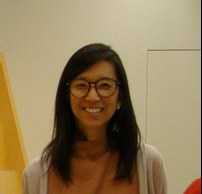
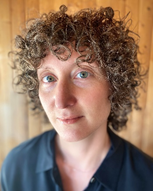
Mine Craft: Design Histories of Mining – Ellen Huang, Associate Professor of Art and Design History, ArtCenter College of Design, Pasadena, California
Arden Stern, Assistant Professor of Humanities and Sciences, ArtCenter College of Design, Pasadena, CA
Ellen Huang, Ph.D. is a historian of material culture, art, and technology at ArtCenter College of Design (Pasadena, CA, USA). In addition to teaching and research, Huang is also a curator, having organized exhibitions through universities such as the Ackland Museum of Art (UNC Chapel Hill), University of San Francisco and the Cantor Arts Center at Stanford University, as well as for civic museums. Huang is finishing a manuscript about Jingdezhen porcelain as material design in late-imperial Chinese and global history. Huang has contributed to publications for museums, journalistic forums, and academic journals, including Archives of Asian Art, Journal of World History, Art&Object, Jewels in Buddhist Imaginaries (University of Hawai’i Press), the National Museum of Korea Research Series, and Oxford Bibliographies.
Arden Stern, Ph.D. is a design historian whose scholarship focuses on the intersecting histories of US labor, graphic design, and visual culture. They are currently an Assistant Professor of Humanities & Sciences at ArtCenter College of Design (Pasadena, CA, USA), also teaching in the Media Design Practices program, and have served as Visiting Faculty in the Department of Anthropology at Wayne State University. They have contributed to various scholarly and journalistic publications, including the Design & Culture journal, Design Issues, and Print magazine, and are currently working on a manuscript that analyzes labor and class histories of graphic design in the United States from the late nineteenth century through the present.
Call for Proposals: Materiality and Mediation: Global Conversations
posted by CAA — May 02, 2022
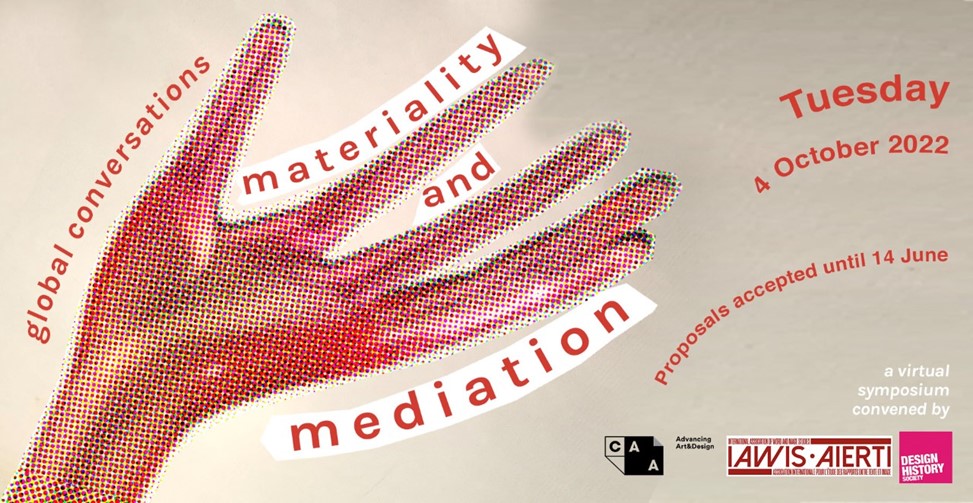
Materiality and Mediation: Global Conversations
Tuesday, 4th October 2022.
A virtual symposium convened by the CAA, the Design History Society, and the International Association of Word and Image Studies
To what extent are materiality and mediation useful foci in the study of design, word and image? What happens when we bring them together? How do materiality and mediation work in tandem as productive subjects of enquiry? What are the local, regional and international variations in the ways these foci are understood and engaged by design historians and those working in word and image studies?
This global collaborative project brings together three intersecting constituencies—art and design, design history, word and image studies—to examine the ways in which materiality and mediation intersect.
- mediating the ethics and sustainability of extraction and deployment of materials
- sensoriality of materials and mediation
- mediation as material activism
- mediating intersections of materiality and form (natural/synthetic/digital matter; art/craft/design/film/photography; prose/poetry/drama)
- localizing/globalizing materials through mediation
- ‘raw and cooked’ materials
- mediating materialities of scale
- mediating immateriality
- mediating materials as signifiers of identity politics
- (Im)material media of mediation
- agency of materials
- dialogues and disputes between makers and mediators.
- a proposal title;
- an abstract of 250 words;
- a statement of relevance to the symposium theme, Materiality and Mediation: Global Conversations;
- and a one-page CV listing major publications.
Please send your proposal via email to the DHS Administrator, Jenna Allsopp, (designhistorysociety@gmail.com) by 12 midnight GMT on Tuesday June 14, 2022. Notifications of acceptance will be emailed on July 8, 2022.
The Design History Society and the International Association of Word and Image Studies are two of CAA’s affiliated societies. If you have an interest in joining CAA as an affiliated society, please visit this page.

Global Conversations: Mentoring Beyond the Classroom
posted by CAA — April 21, 2022
Filmed at the National Museum of Mexican Art, this program features a discussion about mentoring between two Chicago-based artists, Rubén Aguirre and Dan Ramirez, mediated by Cesáreo Moreno, Director and Curator of the National Museum of Mexican Art. Their conversation takes place inside the Aguirre’s exhibition Tectonic Reflections, open at the National Museum of Mexican Art until July 24. This program was a part of the session, “Mentoring Beyond the Classroom: The Continuing Relationship Over Time,” at CAA’s 2022 Annual Conference in February, chaired by Richard Serrano, a member of CAA’s Services to Artists Committee.
CAA 2021: A look back on the past year’s programming, publications, and opportunities
posted by CAA — November 30, 2021
CAA has produced this reel with a compilation of events, scholarship, programs, and initiatives CAA from the last year. See below for a full list of each item (in order of appearance in the video) with links to learn more.
Programming:
CAA’s first virtual Annual Conference
Mariam Ghani in conversation with Laura Anderson Barbata
In Conversation with Dr. Nancy Odegaard
Theresa Avila, Annual Conference Program Chair in conversation with Meme Omogbai
An Inaugural Evening with CAA Distinguished Awardees and Artists
CAA Then & Now: Reflections on the Centennial Book and the Next Century
Karen Leader, author of Chapter 12: Advocacy
Opportunities:
Publication, travel, and support grants
Publications and Publications Programming:
Artist Project, Elana Mann for Art Journal Open
Roundtable discussion for Art Journal Open, Holding Space…
Art Journal and The Art Bulletin
caa.reviews book and exhibition reviews
caa.reviews’s dissertation roster, 2020
Global Programs
CAA-Getty International Program
CAA-Getty 10-Year International Program online publication
Podcasts
CAA Conversations by CAA’s Education Committee
CAA’s 110th Annual Conference will take place in Chicago from February 17-19, followed by virtual live sessions to be held in Zoom from March 3-5. For more information and to register go to this link.
Global Conversations at the 2021 Conference
posted by Allison Walters — February 01, 2021
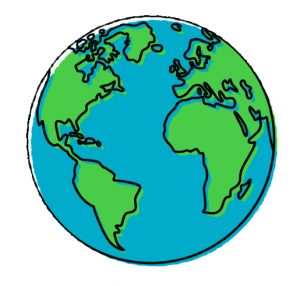
Celebrating Ten Years of the CAA-Getty International Program!
CAA-Getty Global Conversation I: The Migration of Art and Ideas
Live Q&A: Thursday, February 11, 10-10:30 AM
CAA-Getty Global Conversation II: The Climate Crisis, Pandemics, Art, and Scholarship
Live Q&A: Thursday, February 11, 12-12:30 PM
CAA-Getty Global Conversation III: The Challenges, Disobediences and Resistances of Art in the Transnational Imagination
Live Q&A: Friday, February 12, 12-12:30 PM
CAA-Getty Global Conversation IV: Disruptive Pedagogies and the Legacies of Imperialism and Nationalism
Live Q&A: Friday, February 12, 2-2:30 PM
CAA-Getty Global Conversation V: A Multiplicity of Perspectives at the Museum of Modern Art (In conversation with curators at MoMA)
Live Q&A: Saturday, February 13, 10-10:30 AM
See conference schedule for details:
https://caa.confex.com/caa/2021/meetingapp.cgi
CAA-Getty International Program at CAA 2020
posted by CAA — March 17, 2020
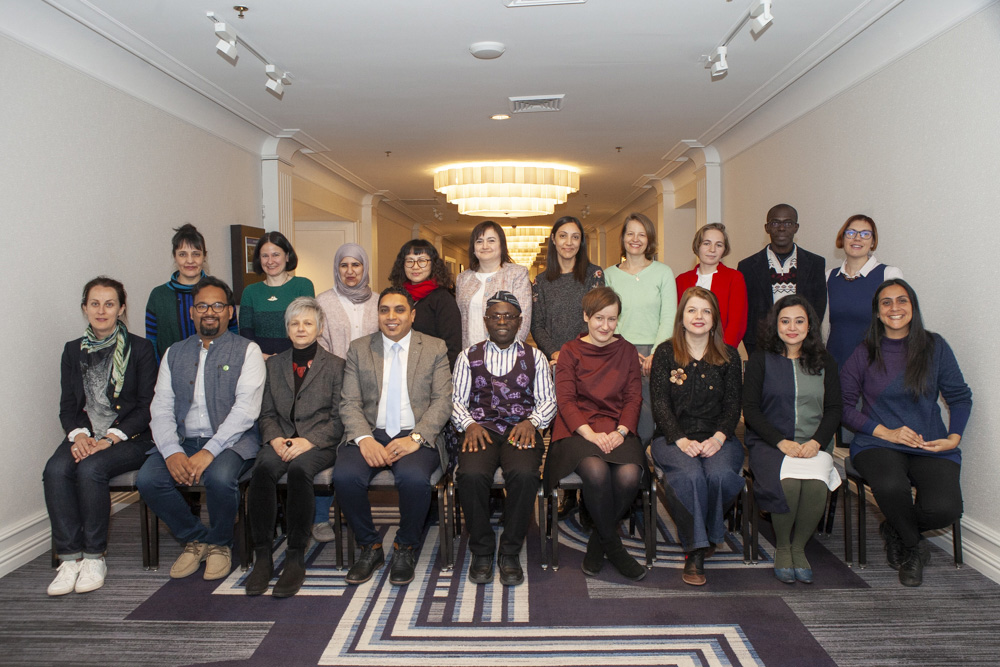
2020 CAA-Getty International Program Participants, photo by Stacey Rupolo.
Front row, left-right: Julia Waite (New Zealand), Saurabh Tewari (India), Daria Jaremtchuk (Brazil), Ali Mahfouz (Egypt), Akande Abiodun (Nigeria), Aleksandra Paradowska (Poland), Iro Katsaridou (Greece), Priya Maholay-Jaradi (Singapore), Giuliana Vidarte (Peru); Back row, left-right: Valeria PazMoscoso (Bolivia), Nora Veszpremi (Hungary/UK), Eiman Elgibreen (Saudi Arabia), Pedith Chan (Hong Kong), Mariana Levytska (Ukraine), Daniela Lucena (Argentina), Katarzyna Cytlak (Poland), Daria Panaiotti (Russia), Jean-Arsène Yao (Côte d’Ivoire), Irene Bronner (South Africa); Not pictured: Ganiyu Jimoh (Nigeria)
One for the Scrapbook! The 2020 CAA-Getty International Program participants—twenty scholars from nineteen countries—arrived in Chicago on the Sunday before the conference to get ready for a busy week of meetings, sessions, and one-on-one conversations. With this year’s participants, the program now includes 135 scholars from 48 countries, adding for the first time representatives from Bolivia, Singapore, and Côte d’Ivoire.
The preconference colloquium on February 11 was held at the School of the Art Institute of Chicago and featured papers on indigenous artists and contemporary art, the politics of cultural heritage, new subjects for art history, artistic exiles, and critical pedagogies.
Eleven US-based CAA members served as hosts for the international visitors, introducing them to scholars in their fields, taking them to Chicago-area museums, and attending their preconference colloquium.
Toward the end of the week, five alumni added their voices to the annual Global Conversation session, this year addressing Art History and the Politics of Vision.
As Julia Waite, from New Zealand, summarized the week: “Attending the CAA conference was hugely stimulating, and I left feeling excited about the future of art history. It reminded me of the strengths of deep art historical research in providing a more complex and nuanced understanding of art and society.”
The CAA-Getty International Program: Looking Forward, Looking Back
posted by CAA — August 01, 2019
This article was written by Janet Landay, project director of the CAA-Getty International Program since its inception.
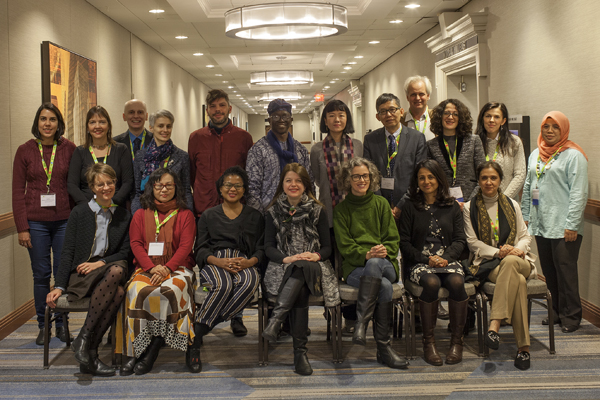
2019 participants in the CAA-Getty International Program, photographed at the Annual Conference in New York. Photo by Ben Fractenberg
This is open season for the CAA-Getty International Program; that is, we’re accepting applications from international scholars between now and August 23rd to participate in next year’s program at the Annual Conference in Chicago. This will be the ninth year of the program and we’re looking for academics, curators, or artists who teach art history from countries not well represented in CAA’s membership (primarily non-Western countries from the global south, all parts of Asia, and Eastern Europe). Specifically, we want to bring scholars who are advancing our understanding of the visual arts, be it through art history, visual studies, or any number of intersecting disciplines, such as aesthetics, history, post-colonial studies, gender studies, cultural heritage research, etc. The range of topics addressed by participants since the program began nine years ago is remarkable, as exemplified in last year’s programs included at the end of this article.
The mission of the CAA-Getty International Program is to bring new voices to the CAA community to enrich the conversation about globalization and inclusion in visual arts scholarship. Since it began in 2012, the program has brought 120 scholars from 46 countries to its conferences, including representatives from Argentina, Albania, Bangladesh, Benin, Brazil, Bulgaria, Burkina Faso, Cameroon, Chile, China, Croatia, Cuba, Czech Republic, Ecuador, Egypt, Estonia, Ghana, Greece, Haiti, Hungary, Iceland, India, Iran, Iraq, Lebanon, Malaysia, Mexico, New Zealand, Nigeria, Pakistan, Peru, Poland, Portugal, Romania, Russia, Serbia, Slovakia, South Africa, South Korea, Sri Lanka, Taiwan, Thailand, Turkey, Uganda, Ukraine, and Vietnam. Many of these scholars have returned to CAA conferences as speakers, session chairs, and members of CAA’s International Committee. They have also contributed articles to CAA’s publications and collaborated with scholars in the United States that they met while attending a conference.
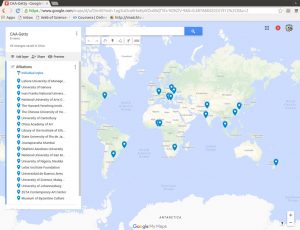
Map showing home countries of 2019 CAA-Getty International Program participants. Map provided by Nazar Kozak.
Each year, US-based CAA members serve as hosts to the international scholars, introducing them to colleagues, guiding them through the conference’s vast array of sessions and programs, and frequently taking them to museums and collections in town. To date, over 60 CAA members have participated in the program, supported with honoraria from the National Committee for the History of Art.
In 2020, we will bring fifteen new scholars and five alumni to the Chicago conference. Please help us spread the word of this grant opportunity to colleagues or institutions in the regions mentioned above by sharing this link to the program’s description and application.
And if you would like to participate as a host, send me an email at jlanday@collegeart.org.
What follows is the program for two key events from the 2019 CAA-Getty International Program: a preconference colloquium on February 12th on international issues in art history at which twenty scholars participated, and an alumni conference session on February 14th that featured five CAA-Getty alumni. Included below is the program for the February 12th colloquium, followed by the abstracts for the February 14th alumni conference session.
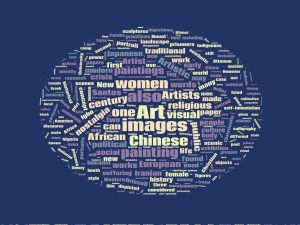
Word cloud showing most frequently used words in the 2019 Preconference Colloquium of the CAA-Getty International Program. Illustration provided by Nazar Kozak.
PROGRAM
GLOBAL CONVERSATIONS 2019
PRECONFERENCE COLLOQUIUM
Tuesday, February 12, 2019
Starr Foundation Hall, Parsons School of Design
8:30 AM Coffee, welcome, and introductions
9:15 AM Examples of Defining or Constructing Aesthetics in Chinese and Japanese Art
Chair: Chen Liu, Harvard-Yenching Institute, Harvard University, 2018-19
The Making of Scenic Sites: Landscape Painting, Tourism and Nationalism in Republican China
Pedith Chan, Chinese University of Hong Kong
Art by Japanese Prisoners in New Zealand during WWII
Richard Bullen, University of Canterbury, New Zealand
Lucy Driscoll and Developing a Theory of Chinese Painting
Jian Zhang, China Academy of Art, Hangzhou
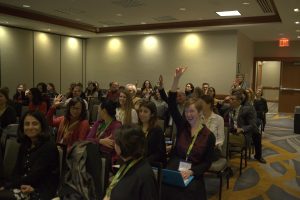
CAA-Getty International Program preconference colloquium, February 12, 2019. Photo by Ben Fractenberg
10:30 AM Orientalism/Occidentalism
Chair: Nadhra Khan, Lahore University of Management Sciences, Pakistan
From Occidentalism to an Occidentalizing Art: An Iranian Gaze to the Occident
Negar Habibi, University of Geneva, Switzerland
Deconstructing Imperialism: The Intersection of Religion, Politics, and Design in the Iconography of a Christian Saint
Halyna Kohut, Ivan Franko National University of Lviv, Ukraine
Orientalism and Female Portraiture in Nineteenth-Century Painting in Romania
Oana Maria Nicuță Nae, George Enescu National University of Arts, Iasi, Romania
11:45 AM How Do We Approach Religious Art?
Chair: Nazar Kozak, Department of Art Studies, Ethnology Institute, National Academy of Sciences of Ukraine
The Last Judgment in Spanish America as Social Rhetoric of Salvation and Damnation
Tamara Quírico, State University of Rio de Janeiro, Brazil
Dancers, Musicians, Brahmins and Ṛṣis: Understanding the Temple Worship of the Pāśupata sect in Angkor, Cambodia
Swati Chemburkar, Southeast Asian Art and Architecture, Jnanapravaha, Mumbai, India
You Cannot See It: Access to Religious Artistic Materials
Stephen Fọlárànmí, Ọbáfémi Awólọ́wọ̀ University, Ilé-Ifè, Nigeria
1:00 PM Lunch
2:30 PM The Body, Identity, and Artistic Agency
Chair: Katarzyna Cytlak, Center for Slavic and Chinese Studies, University of San Martín, Argentina
Shifting Female Identity: Female Cross-dressing in Southeast Nigeria
Chukwuemeka Nwigwe, University of Nigeria, Nsukka
Challenging the “Unconscious”: Agnaldo Manoel dos Santos and the Revision of Afro-Brazilian Art
Juliana Ribeiro da Silva Bevilacqua, University of Campinas (Unicamp), Brazil
The Reinvention of the Body in Volatile Times: Political and Artistic Intersections between Buenos Aires and New York in the 1980s
Viviana Usubiaga, National Scientific and Technical Research Council (CONICET), University of San Martín/University of Buenos Aires, Argentina
3:45 PM Politics and Art in Dark Times
Chair: Sarena Abdullah, School of the Arts, Universiti Sains Malaysia, Penang
A Flame For Freedom
Marko Stamenkovic, ZETA Contemporary Art Center, Tirana, Albania
Sanitizing Memory through Erasure: Post-apartheid Nostalgia in Contemporary Visual Art Practice
Zamansele Nsele, University of Johannesburg, South Africa
The Crisis Displayed: Greece’s Participation at the Venice Art Biennale
Iro Katsaridou, Museum of Byzantine Culture, Thessaloniki, Greece
5:00 PM Wine Reception
GLOBAL CONVERSATIONS 2019
ALUMNI CONFERENCE SESSION
ABSTRACTS
Thursday, February 14, 2019
Creative Pedagogy: Mapping In-between Spaces Across Cultures
Nazar Kozak (Chair), National Academy of Sciences of Ukraine
Art-historical curricula tend to provide imaginary “racks” on which each artwork could be assigned to chronological and geopolitical shelves. In practice, however, such systems has difficulties in accommodating phenomena that fall in-between proposed categorizations. Their presence in art-historical classrooms corresponds to cosmology ‘s Dark matter: it shapes the Universe while remains directly unobserved. Hybrid phenomena have produced an important impact on art scenes across historical periods and cultures, and illumination of this impact plays crucial role in making art history more fully global discipline. This session addresses cross-cultural entanglements and overlaps in which borders looses their fix and reveals their porosity. Structured around creative pedagogy it discusses specific historic cases from the teaching perspectives moving towards inclusive and collaborative paradigm especially in mixed-class environments engaging students and faculty from different countries. The panelist, who are the CAA-Getty International Program alumni from Asia, Latin America, and Eastern Europe, share their teaching methods that proves efficiency in navigating across cultures as well and theoretical optics providing optimal focus on transcultural dialog and reciprocal enrichment.
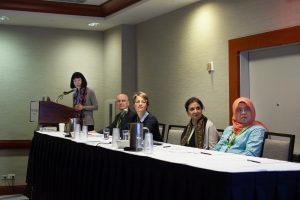
From left to right: Chen Liu, Nazar Kozak, Katarzyna Cytlak, Nadhra Shahbaz Khan, and Sarena Abdullah at the CAA-Getty International Program alumni conference session, February 14, 2019. Photo by Ben Fractenberg
An Italian in China: The Curious Case of Giuseppe Castiglione
Chen Liu, Tsinghua University
What happens when China and the West encounter each other? A clash of traditions may generate unexpected art forms that defy categorization, as tellingly revealed in the life and works of the multi-talented Italian Jesuit artist Giuseppe Castiglione (1688-1766), court painter to three Qing Emperors. Despite his popularity in China both during and after his lifetime, he is surprisingly little known in the West beyond those who specialize in classical Chinese art, with sparse literature in languages other than Chinese (mainly in Italian and French). Existing studies of Castiglione’s works, focusing largely on his paintings, tend to emphasize the “Western” trend he initiated in early modern China or his fusion of “European” and “Chinese” traditions, leading to oversimplification of both. A novel teaching course featuring cultural hybridity in both its subject and audience (a mixed group of Chinese and Western students) may help address such problems of transcultural interpretation and reception as exposed by the curious case of Castiglione. Using Castiglione’s art – painting, decoration and architecture – as a mirror, and by posing previously neglected questions such as “what is ‘non-Chinese’ or ‘non-Western’ in his works, and “which ‘Chinese’ and ‘European’ artistic styles/techniques did he adopt, adapt, or reject”, the course seeks to stimulate more profound reflections on the sophisticated, sometimes ambiguous traditions of both Chinese and European art, their compatibility and incompatibility, and to illuminate the confused in-between areas.
Pedagogy of the Transborders: Reviewing East European art from the perspective of transatlantic cultural exchanges with Latin American and African cultures
Katarzyna Cytlak, Centro de Estudios de los Mundos Eslavos y Chinos, Universidad Nacional de San Martín
Developed since the 1990s by Latin American thinkers, decolonial theory became an effective tool to teach East European art. Concepts, such as “border thinking” (Walter Mignolo) and “transmodernity” (Enrique Dussel), which dealing with bicultural identity in Latin America and postulating a non-hierarchical, inter-epistemic dialogue between cultures, offer a new framework to reconsider transatlantic artistic exchanges and cultural polarizations within the European continent. The paper will analyze how transmodern and decolonial approaches could shed new light on East European art and its dialogue with non-Western cultures. Quotations of customs and rites from Polish folklore by the Polish/Mexican artist Marcos Kurtycz were the result of his biculturalism, as well as an artistic strategy aiming at distinguishing himself on the Mexican scene. Self–identification with African cultures and politics by the Polish artists of the 1980s (Marek Sobczyk, The Luxus Group) could be explained as proof of the artists’ criticism of the Non-Aligned Movement, the symptom of their “radicalized utopian inclusivity” (Boris Groys), and as their critical comment on the late Socialist societies in the processes of Westernization.
Images of Guru Nanak: Locating Patterns of Words in Images
Nadhra Shahbaz Khan, Lahore University of Management Sciences
Traditional arts in the Indian subcontinent are strongly allied to oral traditions and to written text including both folklore and literature. Examples of these abound in secular and religious realms and are manifest in a large body of miniature paintings and murals showing the Hindu stories of Heer-Ranjha, Sassi-Punnoo and Dhruv Bhagat and relief panels illustrating Buddhist jataka tales and Hindu epic poems such as the Ramayana and Mahabharata. This paper maps the depiction of Guru Nanak, the first of the ten Sikh gurus, and their dependence of the Indian visual vocabulary taken from folklore, literature and cultural practices. He is usually painted with a fixed set of attributes, each laden with references to cultural practices and beliefs: some long forgotten, others have remained current until this day. Modern interventions however, have obscured meanings of many of these concepts and practices making it difficult today to fully understand their significance in their iconographic program. Refreshing the forgotten relationship between the word and image promises to lead to creative pedagogical possibilities where realms of imagination, rendition and performance can be navigated to connect not only with the creators and viewers of art but also the ones who dwell in it.
Cross Cultural Encounters through Creative Pedagogy in Teaching Art History
Sarena Abdullah, Universiti Sains Malaysia
This paper explains and discuses my recent and first Collaborative Online International Learning (COIL) with an American university within the context of students’ cross-cultural encounters imbedded through Art History subject(s). In the 15 weeks of Malaysian Modern Art (VHS 202) and Selected Topics In Asian Art (ARTH 294) class, my American collaborator and me, designed and aligned our art history classes pedagogy cross-culturally taking in various considerations of Malaysian and American context into our teaching outcome. This paper will discuss how we have adopted and adapted the COIL module in our own classes, and innovate our collaborative engagements using Facebook as our main platform. From tasks such as personal introductions of students from both Malaysian and American classes, group videos of their cultural/national background, to producing group videos on artworks and /or material culture from local institutions, to completing cross collaboration group work tasks—this pedagogical approach had managed to expose students to different cross-cultural realities and encounters (and even time zones) weaved into their learning experiences. This paper will discuss the context of such creative pedagogy in the context of how Art History can also be a platform to disseminate creative knowledge today.
GLOBAL CONVERSATIONS 2018
posted by CAA — May 29, 2018
In 2018, the CAA-Getty International Program featured two main events: a preconference colloquium on February 20 on international issues in art history at which all twenty scholars participated, and an alumni conference session on February 23 that featured five CAA-Getty alumni and an American-based scholar’s response. Included below is the program for the February 20 colloquium, followed by the abstracts and respondent’s remarks for the February 23 alumni conference session.
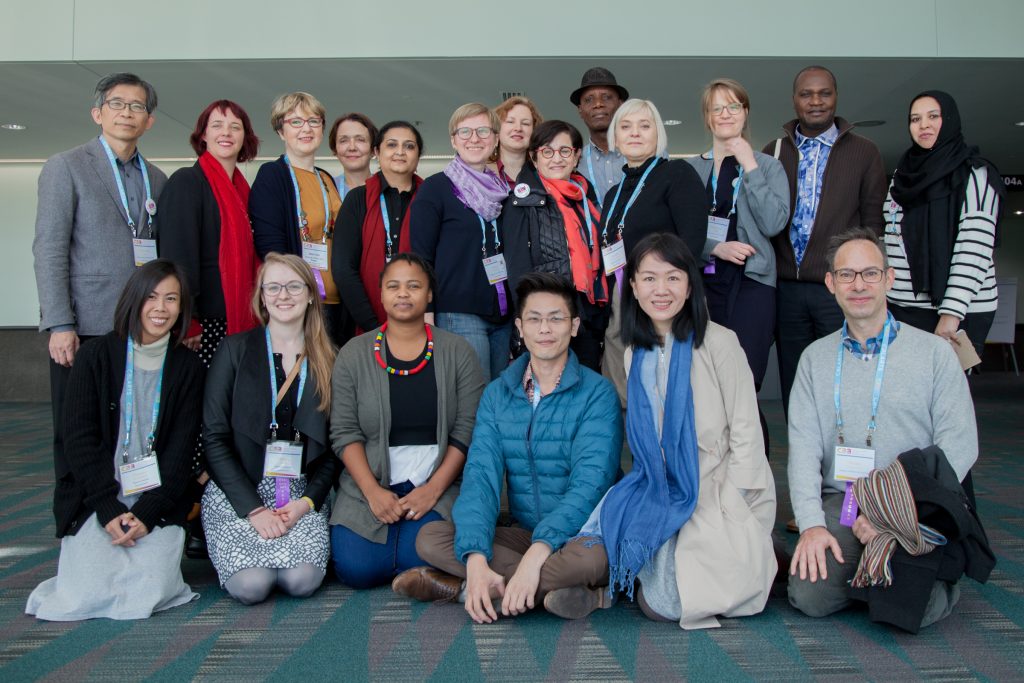
Now in its seventh year, the CAA-Getty International Program brought fifteen new participants and five alumni to the 2018 Annual Conference in Los Angeles. Click here to read their bios and learn more. Photo: Rafael Cardenas
PROGRAM
Global Conversations 2018
Preconference Colloquium
Tuesday, February 20, 2018
The Getty Center
8:30 AM Coffee, welcome, and introductions
9:15 AM Postcolonial and Eurocentric Legacies
Chair: Peju Layiwola, Artist and Professor of Art History, Department of Creative Arts, University of Lagos, Nigeria
Beyond the Readymade: The Use of Found Objects in Contemporary South African Art
Alison Kearney, Lecturer, University of the Witwatersrand (Wits), Johannesburg, South Africa
Resistance to Western Paradigms in East European and Latin American art from the late 1960s to 1989
Katarzyna Cytlak, Postdoctoral Researcher, Universidad Nacional de San Martín, Buenos Aires, Argentina
The Emergence of Taiwan’s Modern Visual Art and the Formation of Identity
Hsin-tien Liao, Dean of College of the Humanities, National Taiwan University of the Arts, Taipei, Taiwan
10:15 AM Global Trends in Museum Research and Exhibitions
Chair: Ildiko Feher, Associate Professor, Department of Art History, Hungarian University of Fine Arts, Budapest, Hungary
Digital Media Exhibition Curating in a University: the Case of the University of Port Harcourt Museum
John Agberia, Professor, University of Port Harcourt, Nigeria
Thinking Cross-culturally: Asian Art in a Visual Dialogue,
Markéta Hánová, Director of the Collection of Asian Art, National Gallery, Prague, Czech Republic
Gender Issues in Museums: Possibility, Provocation, Necessity?
Natalia Keller, Researcher of the Collection, Museo Nacional de Bellas Artes, Santiago, Chile
11:15 AM Interdisciplinary and Transnational Methodologies
Chair: Nomusa Makhubu, Senior Lecturer of Art History, Michaelis School of Fine Art, University of Cape Town, South Africa
Mirrors and the Invention of Perspective
Felipe Chaimovich, Chief Curator and Professor, Museo de Arte Moderna de São Paulo and Fundação Armando Álvares Penteado, Brazil
Experiments and Innovative Strategies in Croatian Photography during the 1960s and 1970s
Sandra Krizic-Roban, Senior Research Advisor, Institute of Art History, Zagreb, Croatia
Understanding African Art: an Interdisciplinary Exercise
Romuald Tchibozo, Senior Lecturer, University of Abomey-Calavi, Benin
12:15 PM Lunch
2:00 PM Cultural Identity, Politics, and the Powers of Art
Chair: Parul Pandya Dhar, Associate Professor of South and Southeast Asian Art History, Department of History, University of Delhi, India
Tracing the Cultural Ideology of the Indus Valley People
Sarah Umer, PhD Coordinator/Assistant Professor, Lahore College for Women, Pakistan
Datok Fatimah in Chinese Body: The Homely and Unhomely Presence of a Klang House Temple
Simon Soon, Senior Lecturer, Visual Art Department, University of Malaya, Kuala Lumpur, Malaysia
Reenergized by the Maidan: A Conjunction of Art and Politics
Natalia Moussienko, Leading Research Fellow, Modern Art Research Institute, National Academy of Arts, Kyiv, Ukraine
3:00 PM Considering an International Art History Curriculum
Chair: Cezar Bartholomeu, Artist and Professor of Art History, School of Fine Arts, Universidade Federal do Rio de Janeiro, Brazil
Terminology and Methodology in Teaching Asian Art to Russian Art History Students
Anna Guseva, Associate Professor, Higher School of Economics, St. Petersburg, Russia
A Chinese Perspective on Cross-cultural Transmissions of Art History
Chen Liu, Associate Professor, Tsinghua University, Beijing, China
Translation and Change: Teaching Art History in Thailand
Thanavi Chotpradit, Silpakorn University, Bangkok, Thailand
4:00 PM Open discussion
Moderator: Steven Nelson, Professor of African and African American Art and Director of the UCLA Center for African Studies
5:00-6:30 PM Cocktail Reception
GLOBAL CONVERSATIONS 2017
posted by CAA — May 18, 2017
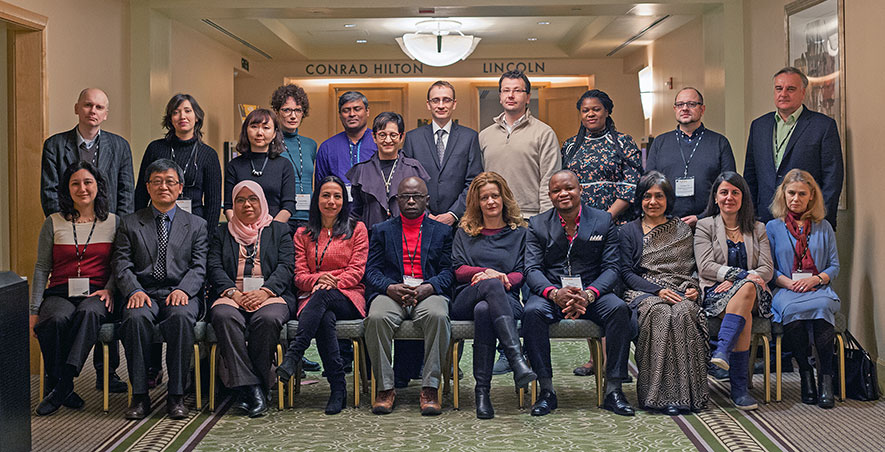
2017 CAA-Getty International Program Reunion Participants
Front row, left to right: Ana Mannarino (Brazil); Ding Ning (China); Sarena Abdullah (Malaysia); Rosa Gabriella Gonçalves (Brazil); Abiodun Akande (Nigeria); Sandra Uskokovic (Croatia); Hugues Heuman Tchana (Cameroon); Parul Mukerji (India); Ceren Ozpinar (Turkey); Irena Kossowska (Poland)
Second row, left to right: Nazar Kozak (Ukraine); Georgina Gluzman (Argentina); Shao Yiyang (China); Ljerka Dulibic (Croatia); Khademul Haque (Bangladesh); Janet Landay (CAA Program Director, USA); Richard Gregor (Slovakia); Davor Dzalto (Serbia); Portia Malatje (South Africa); Cristian Nae (Romania); Laris Boric (Croatia)
The following papers on international topics in art history were presented at four sessions during the 2017 Annual Conference. Organized to commemorate five years of the CAA-Getty International Program, each session includes five alumni scholars from around the world, joined by a distinguished scholar from the United States. The papers can be read in their entirety at the links below.
GLOBAL CONVERSATIONS I
Unsettling the Discipline: Decolonizing the Curriculum
Chair: Michael Ann Holly, Clark Art Institute
Decolonizing the Curriculum: Synthesizing “Multiple Consciousness” into the Art History Curricula of Nigeria and Ghana
Abiodun Akande, Emmanuel Alayande College of Education Oyo, Nigeria
The Emancipatory Potential of Karaman’s Concept of “Peripheral Art”: Still Operative?
Laris Borić, University of Zadar, Croatia
“Does this really matter?” Art History, Feminism, and Peripheral Positions
Georgina Gluzman, Universidad de San Andrés, Argentina
Decolonizing in the Age of Globalization: Experience of a Bangladeshi Art Historian
AKM Khademul Haque, University of Dhaka, Bangladesh
Dangers of Eurocentrism and the Need to Indigenize African and Grassfields Histories
Hugues Heumen Tchana, Higher Institute of the Sahel, University of Maroua, Cameroon
GLOBAL CONVERSATIONS II
Dominant Ideologies and Political Trauma: Can Art History Be Reborn?
Chair: Frederick M. Asher, University of Minnesota
After the Wall: Cultural Trauma and Methodological Challenges in Polish Art History
Irena Kossowska, Institute of Art, Polish Academy of Sciences/Nicolaus Copernicus University, Poland
How My Art History Was Reborn
Nazar Kozak, National Academy of Sciences of Ukraine
d.o.a.
Portia Malatjie, Goldsmiths, University of London (South Africa)
Visible and Invisible: How Art History Can Be Reborn from Dominant Ideology in China
Shao Yiyang, Central Academy of Fine Arts, Beijing, China
“Reconstructing” Art History
Sandra Uskoković, University of Dubrovnik, Croatia
GLOBAL CONVERSATIONS III
The Trouble with (The Term) Art
Chair: Mary Miller, Yale University
SENI MODEN as an Evolving Term and Practice in Malaysian Art
Sarena Abdullah, School of the Arts, Universiti Sains Malaysia
“When Did Beauty Become So F…n’ Ugly?” Troubles with Art and Its Functions
Davor Džalto, The Institute for the Study of Culture and Christianity, Belgrade/American Academy in Rome (Serbia)
Short Introduction on Applying the “Homonymic Curtain” to Recent Exhibitions
Richard Gregor, Trnava University, Slovakia
Art History and Cultural Hegemony in Brazil: the Risks of Misunderstanding Indigenous Art and Colonial Art
Ana Mannarino, Federal University of Rio de Janeiro, Brazil
Why Is the Miniature Painting Not History?
Ceren Özpınar, University of Sussex (Turkey)
GLOBAL CONVERSATIONS IV
Transnational Collaborations and Interdisciplinarity: Generating New Knowledge
Chair: David J. Roxburgh, Harvard University
Tracing the Transfer of Cultural Objects/Challenging the Burdens of the Past
Ljerka Dulibic, Croatian Academy of Sciences and Arts, Croatia
Aby Warburg and the Science Without a Name
Rosa Gabriella de Castro Gonçalves, Universidade Federal da Bahia, Brazil
Decolonizing Mimesis: Mad Metaphors and Slippery Similarities in a Classical Sanskrit Text on Painting
Parul Dave Mukherji, Jawaharlal Nehru University, India
Decolonizing Cartography? Visual Culture and the Poetics of Space in Critical Contemporary Art
Cristian-Emil Nae, George Enescu National University of Arts, Romania
Chinese Blue-and-White Porcelain in Western Painting
Ding Ning, Peking University, China


